There are many flowers that can attract hummingbirds, but some are better at enticing these flying jewels than others.
When choosing hummingbird flowers for your garden or landscape, look for blooms with rich, bright colors (red flowers are particular hummingbird favorites), long or tapered shapes that can accommodate the hovering birds’ long bills, and plentiful nectar to keep them coming back for more sips.
Native plants are always preferred because hummingbirds will be more familiar with the flowers and the plants will thrive with minimal care. Also, consider plants with a long bloom time or repeat blooming, which will provide a reliable food source for hummingbirds for many weeks.
The same plants loved by hummingbirds will also be attractive to butterflies, bees, and other pollinators. Check your local nursery or landscaping center for popular and appropriate cultivars for your area, and create your own hummingbird habitat today.
Fun Fact about Hummingbirds
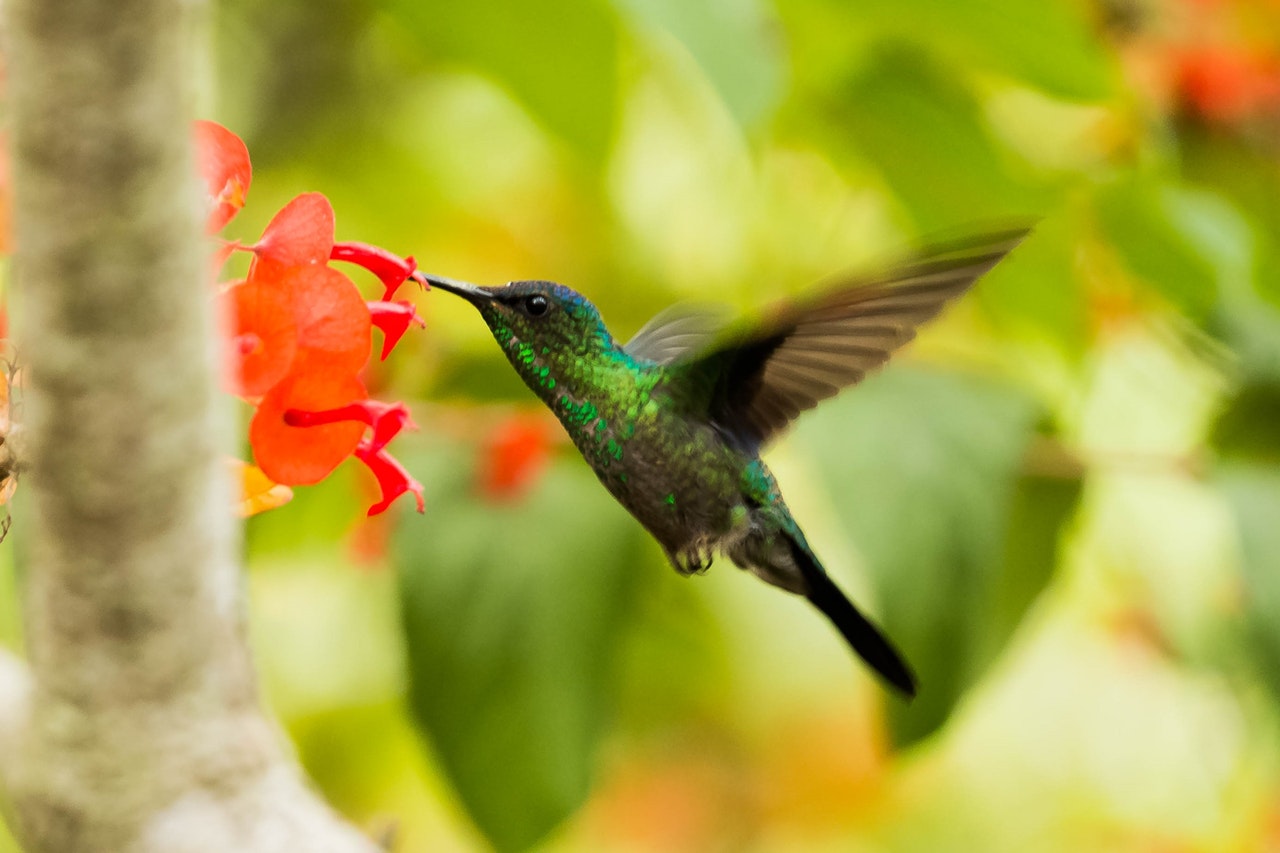
- They are the smallest migrating bird. They don’t migrate in flocks like other species, and they typically travel alone for up to 500 miles at a time.
- The name, hummingbird, comes from the humming noise their wings make as they beat so fast.
- Hummingbirds are the only birds that can fly backwards.
- Hummingbirds have no sense of smell. While they can’t sniff out feeders, they do have good color vision. Some birds like the Ruby-throated Hummingbird prefer orange or red flowers. Despite this, red dye should not be used in nectar as it could harm the birds. Instead, plant naturally red or orange flowers or use feeders that have red coloring in their structure.
- The average weight of a hummingbird is less than a nickel.
- Their tiny legs are only used for perching and moving sideways while perched. They can’t walk or hop.
- Hummingbirds drink the nectar found in feeders by moving their tongue in and out about 13 times per second. They can consume up to double their body weight in a day.
- The average number of eggs laid by female hummingbirds is only two. These eggs have been found in nests smaller than a half dollar and compare in size to a jellybean or a coffee bean. Some species, like the Black-chinned Hummingbird make their nests with plant down, spider silk, and other natural resources that can expand as their babies grow after hatching.
If you are looking for inspiration, listed below are 7 of the best flower species for attracting hummingbirds to your landscape.
Delphinium
The Delphinium plant is a treasure that can be planted in containers or at the back of mixed borders. They blossom into dozens on each stem, and this gives hummingbirds plenty of nectar sources to share with butterflies and other bugs as well.
The flowers are blue-colored and come in several varieties; choose ones that thrive well for you region depending on what climate your area has because some do better than others when it comes to hot temperatures while others tend to prefer colder climates instead.
Gayfeather
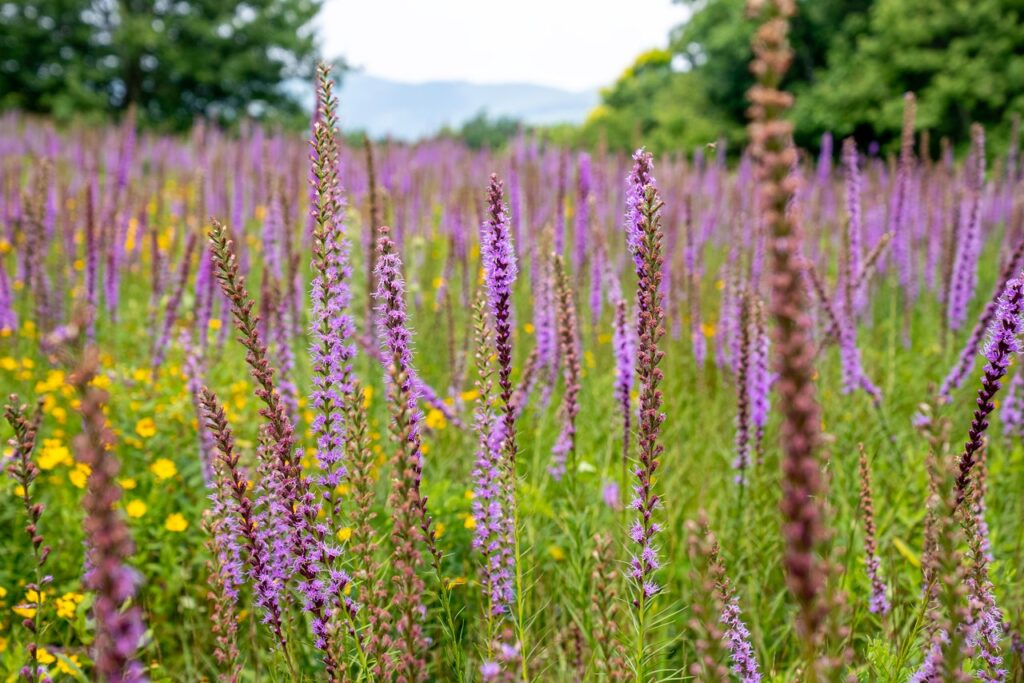
If you seek to add a vertical accent for your midsummer garden, think about Gayfeather. They have purple and white spires that resemble an inverted 3 foot tall exclamation mark- they’re flowers hummingbirds like too!
These sun loving perennials are perfect for any time of year or if ever the need arises to perk up your landscape with some pretty color again.
Chilean Glory Flower
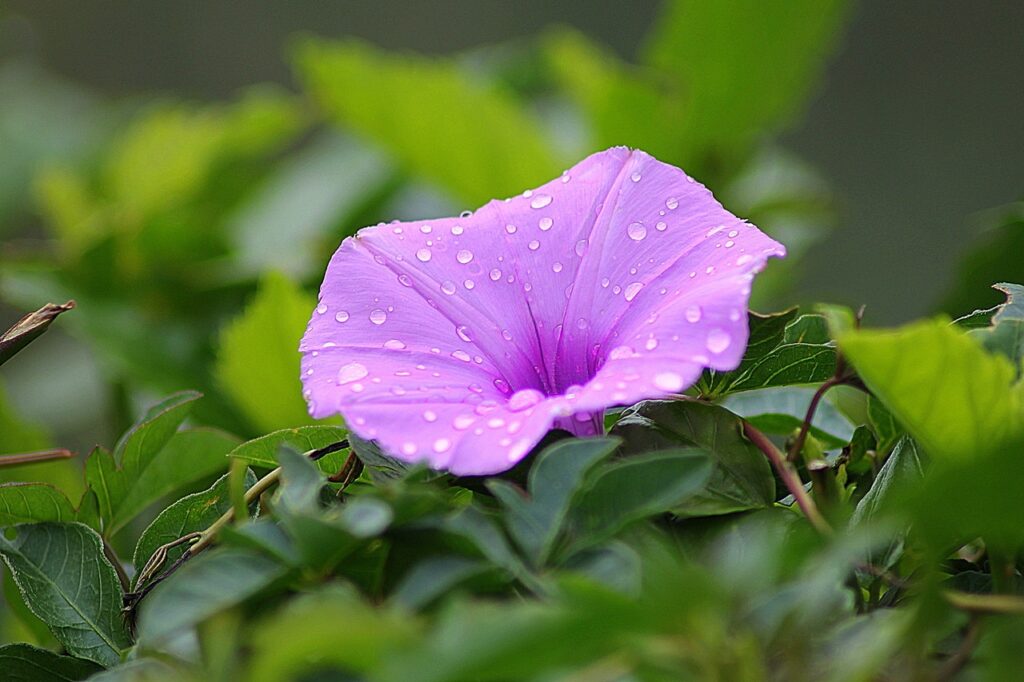
A bright orange trumpet-shaped flower that will bring the hummingbirds to your window! The irresistible Chilean Glory Flower is evergreen and grows very fast. They offer a plethora of flowers with yellow tips, which are available from late spring until fall.
These plants have light green leaves boldly veined for climbing up trellises or fences in no time at all!
Weigela
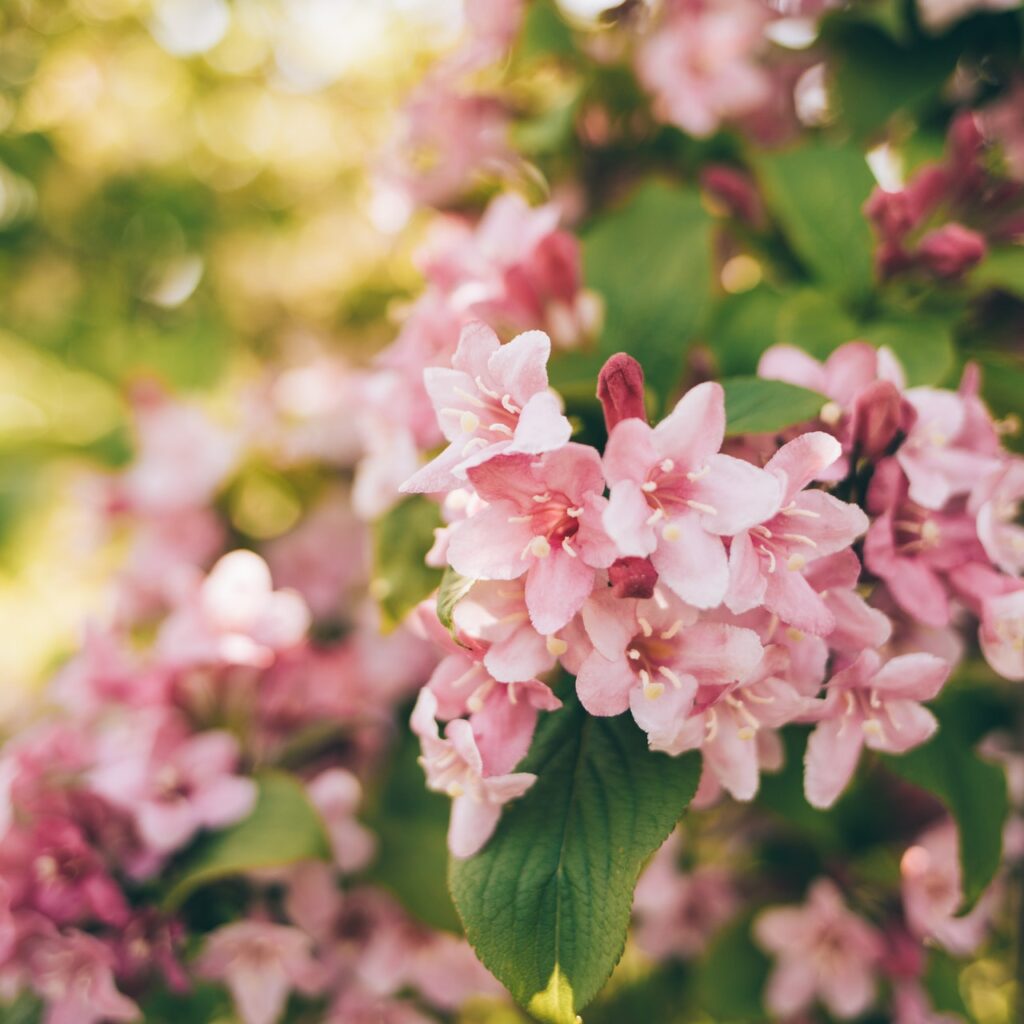
The Weigela is a shrub that produces round, flat flowers in pink or purple. Some cultivars have leaves with maroon and lavender colors as well! These plants bloom from mid to late spring so you can enjoy the blooms for many weeks.
This plant can grow to be 9 feet tall, but there are also varieties that never get beyond 3 and a half. The conditions this deciduous shrub likes best in is full sun or partial shade with room for it to spread out its branches as much as possible.
Hummingbirds love the nectar from these plants like no other!
Foxglove
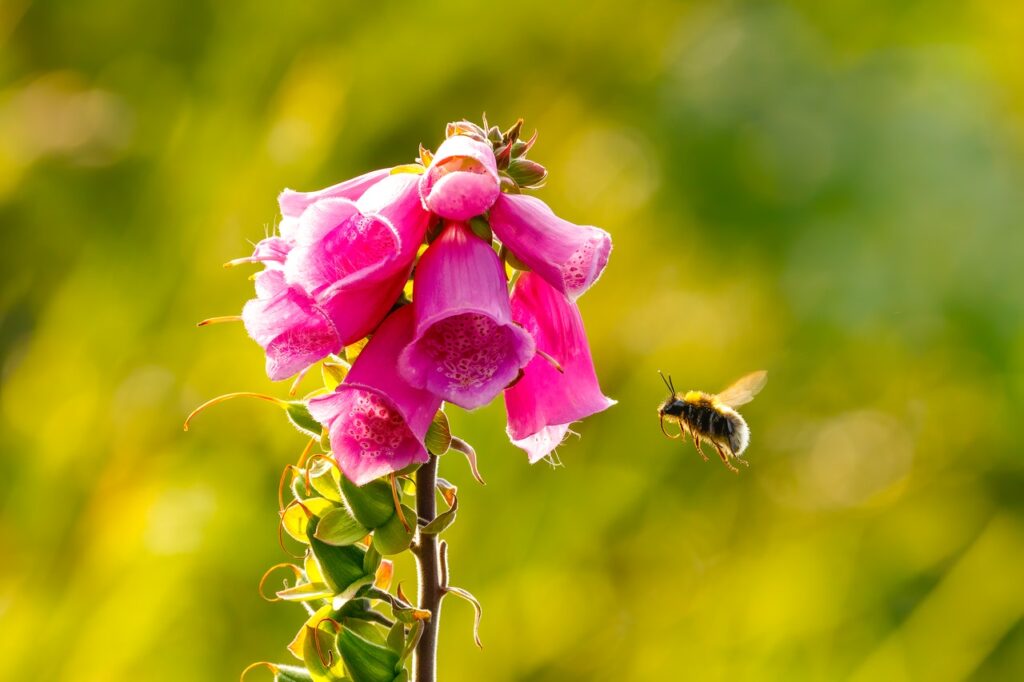
The flowers’ color can be different as they depend on the cultivar that you choose. The foxglove plant does well in acidic soil, which is why it’s mainly found among lawns and gardens for decoration purposes. It ranges from 6 feet to 18 inches tall depending on how much water or fertilizer was given at one time period – their length will grow taller with more care!
Hummingbirds are attracted by its pink, yellow, white and purple blooms; take caution because this flower has a poisonous toxin called cardenolides within them–it doesn’t affect humans but causes horses and livestock very unpleasant side effects if ingested so make sure your pet isn’t going near these plants when you’re not around!
Bee Balm
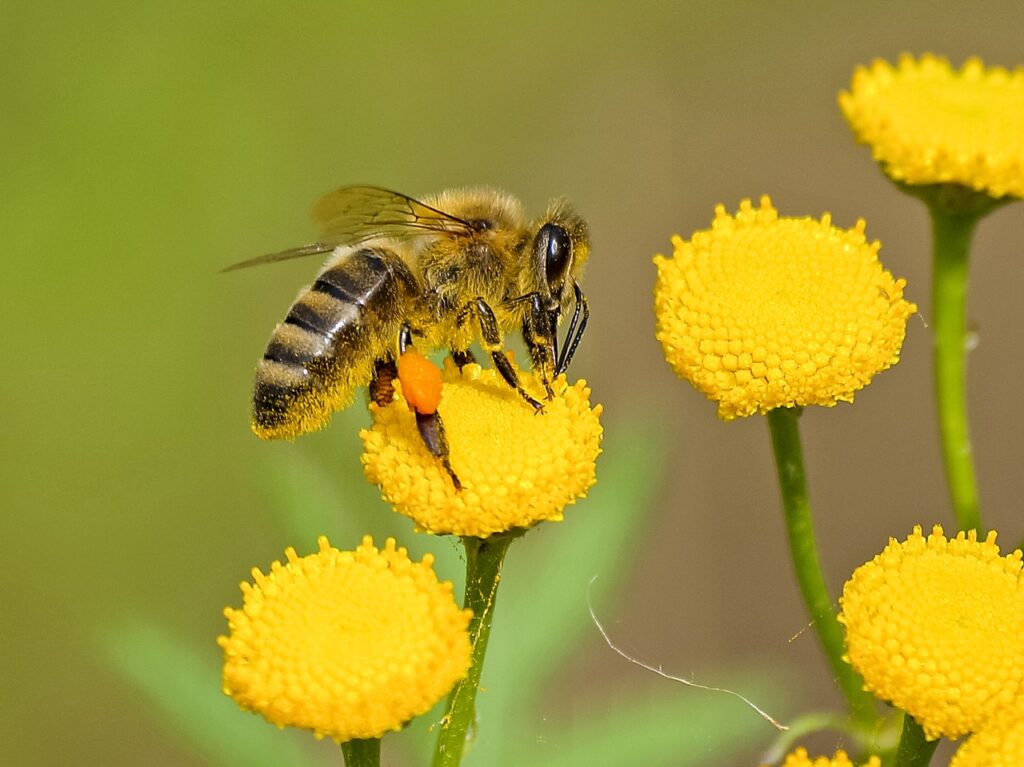
Bee balm is a plant that truly accomplishes its namesake, as it’s loved by bees and other insects. Its flowers are beautiful to look at and provide an excellent source of nutrients for creatures like butterflies or hummingbirds – not just the plants themselves!
It can grow in any type of soil conditions but does better when there’s some wetness around (so you’ll want to keep your garden watered). This flower will be sure to bring beauty into your life all spring long!
Hollyhock
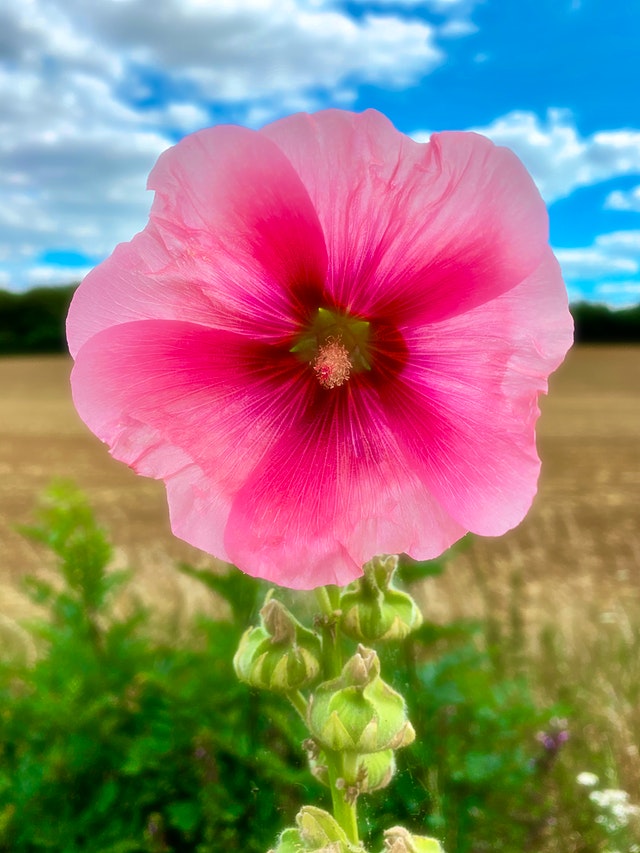
The hollyhock plant is a tall, beautiful flower that can grow up to 6′ feet. It comes in many different colors including red, lavender, pink and purple.
The first blooming periods of the year are longer than those with later flowering seasons which usually last only about two months or less before it dies off for good after producing seeds from its reseeding habit into gardens around your home.
Hummingbirds love this type of perennial because they’re attracted by their rich color as well as nectar inside each petal!















